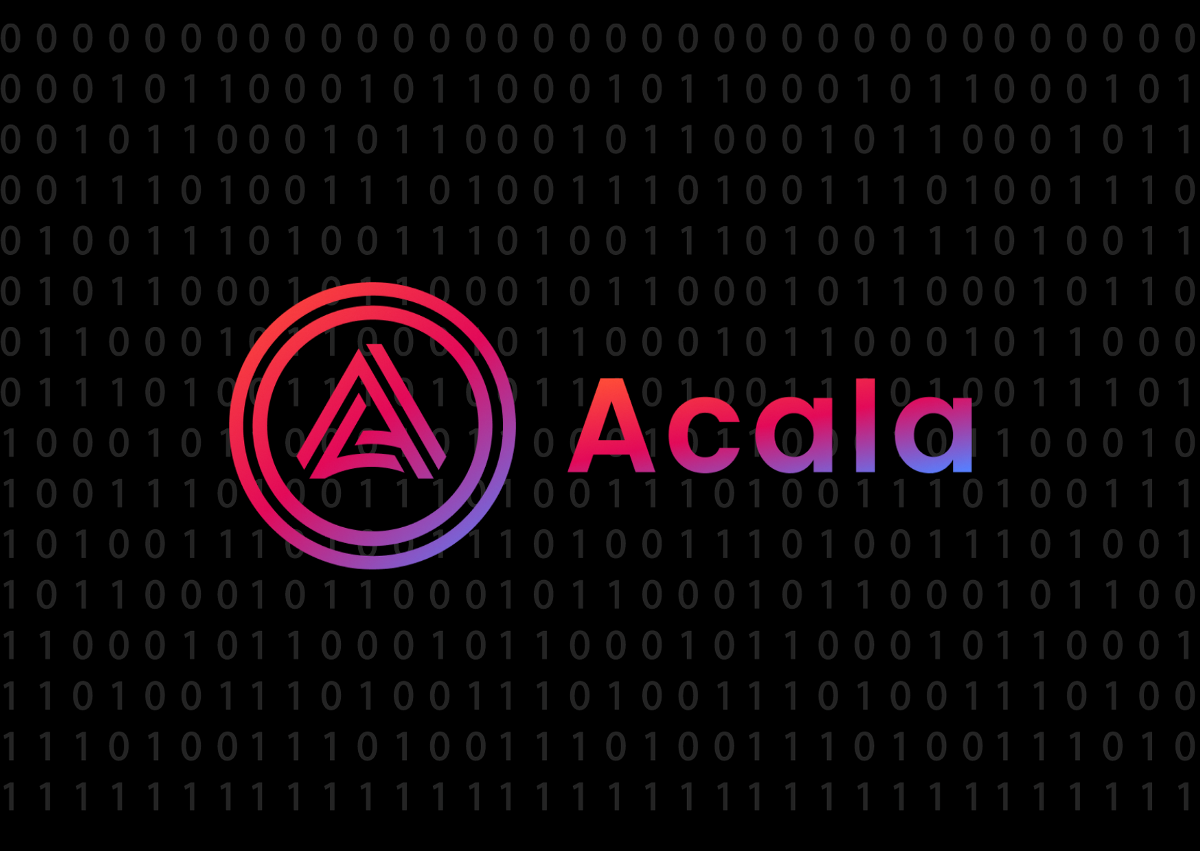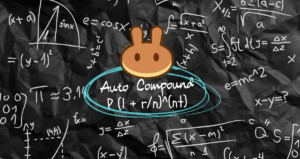
1. Shared security
Acala will launch on day 1 with a robust security infrastructure thanks to Polkadot’s shared security model. To understand this model, let’s turn to the Polkadot wiki:
On a high level, shared security means that all parachains that are connected to the Polkadot Relay Chain by leasing a parachain slot will benefit from the economic security provided by the Relay Chain validators.
The notion of shared security is different from interchain protocols that build on an architecture of bridges. For bridge protocols, each chain is considered sovereign and must maintain its own validator set and economic security. One concern in these protocols is on the point of scalability of security. For example, one suggestion to scale blockchains is that of scale by altcoins, which suggests that transaction volumes will filter down to lower market cap altcoins as the bigger ones fill their blocks. A major flaw in this idea is that the lower market cap coins will have less economic security attached, and be easier to attack. A real life example of a 51% attack occurred recently ( Ethereum Classic attack on January 10), in which an unknown attacker double spent 219_500 ETC (~1.1 million USD). This was followed by two more 51% attacks on ETC.
With shared security, the power of one becomes the power of the many, thus reinforcing the power of the one. Thus, Acala doesn’t need to worry about growing its own set of validators and nominators, saving it a lot of headache and uncertainty. Any Acala competitor who doesn’t exist on Polkadot will not have this advantage and will need to painstakingly build-out and secure their economic security.
2. Cross-chain token transfers
Thanks to its deployment on polkadot, Acala possesses true interoperability with almost every blockchain. First of all, every layer-1 blockchain (parachain) on Polkadot can communicate with each other seamlessly, facilitated by the shared security of the Polkadot relay chain. Token transfers, contract calls, and data transfers can be initiated from one blockchain to the next. For blockchains not part of the Polkadot ecosystem (like Ethereum and Bitcoin), Acala can make transfers using bridges (blockchains that connect other blockchains). Thus, a user on Acala is essentially connected to the whole blockchain ecosystem, far more than a user on Ethereum or Binance Smart Chain for instance.
3. Bring-your-gas
It is weird when you want to swap token A for token B but have to pay gas in token C that you don’t own. You’re forced to buy token C because the protocol can only receive gas fees in one token. No one likes this experience, and so it’s great that Acala has found a glorious solution. Bring-your-gas allows you to pay transaction fees in any token you own. This is made possible thanks to the Acala DEX which swaps to ACA (Acala token) every non-ACA token behind the scenes. Such innovation is possible thanks to having a DeFi-optimized blockchain that prioritizes the user experience over token maximalism.
4. Full EVM compatibility
This makes it possible for any solidity smart contract to migrate from Ethereum with little to no changes. Thus far, Ampleforth, a DeFi building block, has already worked on an Acala deployment of their smart contract. This feature will surely draw more high-quality innovation from the Ethereum developer community to Acala and Polkadot.
5. On-chain governance and forkless upgradability
In the old days, to upgrade the runtime of a blockchain meant forking it, meaning a split of the old network into two, thus weakening the overall security of the system. But thankfully, that’s in the past, at least in relation to Acala. Acala was built using the substrate framework which enables blockchains to have an on-chain governance process for raising issues, directing the network, and resolving disputes. Also enabled by the substrate framework is the ideal of seamless upgradability that renders forks a thing of the past. In this way, the blockchain will update just like your phone app updates, seamlessly. With on-chain governance and seamless upgradability, it is easier to steer the network in any new direction, making Acala as future-proof as can be.
6. Decentralized sovereign wealth fund (dSWF)
Many DeFi projects today choose to burn the fees generated by their protocols in a bid to increase the value of their token by removing some from the supply. But this doesn’t create any real value. An alternative that was not possible until substrate has been adopted by Acala.
Sovereign wealth funds are state funds that often have a collection of foreign currencies as well as other assets like precious metals, equities, bonds, and real estate. A government-run investment fund seems ripe for corruption and mismanagement. That said, some sovereign wealth funds provide real value to their citizens, like Norway’s, valued at over a trillion dollars, which provides a pension for every citizen. Acala’s dSWF provides a vehicle to deliver value to itself and its citizens, but with the transparency and strict adherence to formal logic that blockchain allows. The idea is that rather than burn fees generated by its core protocols, which is the style chosen by many DeFi projects, Acala sends all these fees to the dSWF which is owned by the Acala network — meaning all token holders.
Through the dSWF and governance, Acala will become an economic and political (decision making and execution) sovereign entity. It will pioneer a new way of DAO — DAO 3.0. Just like Norway’s Sovereign Wealth Fund, Acala’s dSWF will reinvest its network surplus in foreign assets — starting with DOT and KSM and gradually diversify into other assets, for the purpose of gaining access to network security, long term wealth generation, and strategically holding stakes in valuable sovereign networks. ACA holders not only collectively own the dSWF, but also can collectively decide how to deploy the dSWF. The funds in the dSWF are essentially the Assets Under Management (AUM) of the Acala network. You can fork the code, the liquidity, and even the community, but you cannot fork AUM.
I recommend reading this article or the whitepaper to get a better understanding.
7. Experienced and high-performing team
The features that make a project worthy of attention aren’t limited solely to the ecosystem parameters. In the case of Acala, its team is one of its greatest strengths. They have received 5 web3 foundation grants to date, including one for cross-chain token transfers which they completed and demonstrated with HydraDX.
Also, of all the projects vying for parachain slots, Acala is the only one with a ready-to-go slate of services. Meaning that if they were to win a parachain slot, users would be able to use ALL of Acala’s financial services — lending, borrowing, token swapping, liquidity provision, etc.
8. Vibrant community
The community that has grown around Acala is full of energy. The proof lay not only in the numbers of followers on social media or members on discord but also in the actions taken by the community. A perfect example is the recent Kusama Derby run by Zeitgeist, a prediction platform on Kusama. Users were asked to vote for the project they expected to win the first parachain slot (if this doesn’t make sense to you, read this article and it will). In the first round, the votes for Acala were so high that it drove their horse off the track! Talk about a vibrant community.
To further underscore the enthusiasm of the Acala community, consider that their first crowdloan call garnered over 10,000 entries in under 48 hours. What that means is that 10,000 people have registered to loan KSM to Karura’s (Acala’s canary network on Kusama) crowdloan effort. Given this, I would be surprised if they don’t win the first parachain slot.
9. High-value partnerships and integrations
Although not fully launched yet, the Acala team has already secured numerous partnerships and integrations that one would have expected would take a lot of time. There’s a partnership with DeFi originals like Compound, Ampleforth, Injective Protocol, etc.
Although great in their own right, these DeFi partnerships pale in comparison to the recently announced partnership with the TradFi (traditional finance) company Current, a leading U.S. financial technology company serving over 3 million Americans. This partnership is such a big deal because it plugs DeFi to TradFi, thus creating HyFi (hybrid finance).
- 000
- 51% attack
- access
- ADvantage
- All
- Altcoins
- announced
- app
- architecture
- around
- Assets
- behind the scenes
- binance
- Bitcoin
- blockchain
- Bonds
- Borrowing
- BRIDGE
- build
- Building
- buy
- call
- code
- Coins
- community
- company
- contract
- Corruption
- Creating
- currencies
- Current
- DAO
- data
- day
- deal
- decentralized
- Decision Making
- DeFi
- Developer
- Dex
- discord
- dollars
- Economic
- ecosystem
- energy
- estate
- ethereum
- EU
- EV
- Feature
- Features
- Fees
- finance
- financial
- financial services
- financial technology
- First
- flaw
- fork
- Framework
- full
- fund
- funds
- GAS
- gas fees
- governance
- great
- Growing
- High
- How
- How To
- HTTPS
- Hybrid
- idea
- Including
- Increase
- Infrastructure
- Innovation
- integrations
- Interoperability
- investment
- IP
- issues
- IT
- launch
- leading
- lending
- Level
- Limited
- Liquidity
- Long
- major
- Making
- management
- Market
- Market Cap
- Media
- medium
- Members
- million
- model
- network
- Network Security
- networks
- Notion
- numbers
- Other
- Partnership
- partnerships
- Pay
- pension
- People
- platform
- power
- Precious Metals
- prediction
- project
- projects
- proof
- Reading
- real estate
- Run
- saving
- Scalability
- Scale
- seamless
- security
- sense
- Services
- serving
- set
- shared
- smart
- smart contract
- So
- Social
- social media
- solidity
- split
- State
- supply
- system
- Technology
- time
- token
- traditional finance
- transaction
- Transparency
- u.s.
- Update
- Updates
- USD
- users
- value
- valued
- vehicle
- Vote
- votes
- Wealth
- What is
- WHO
- win













